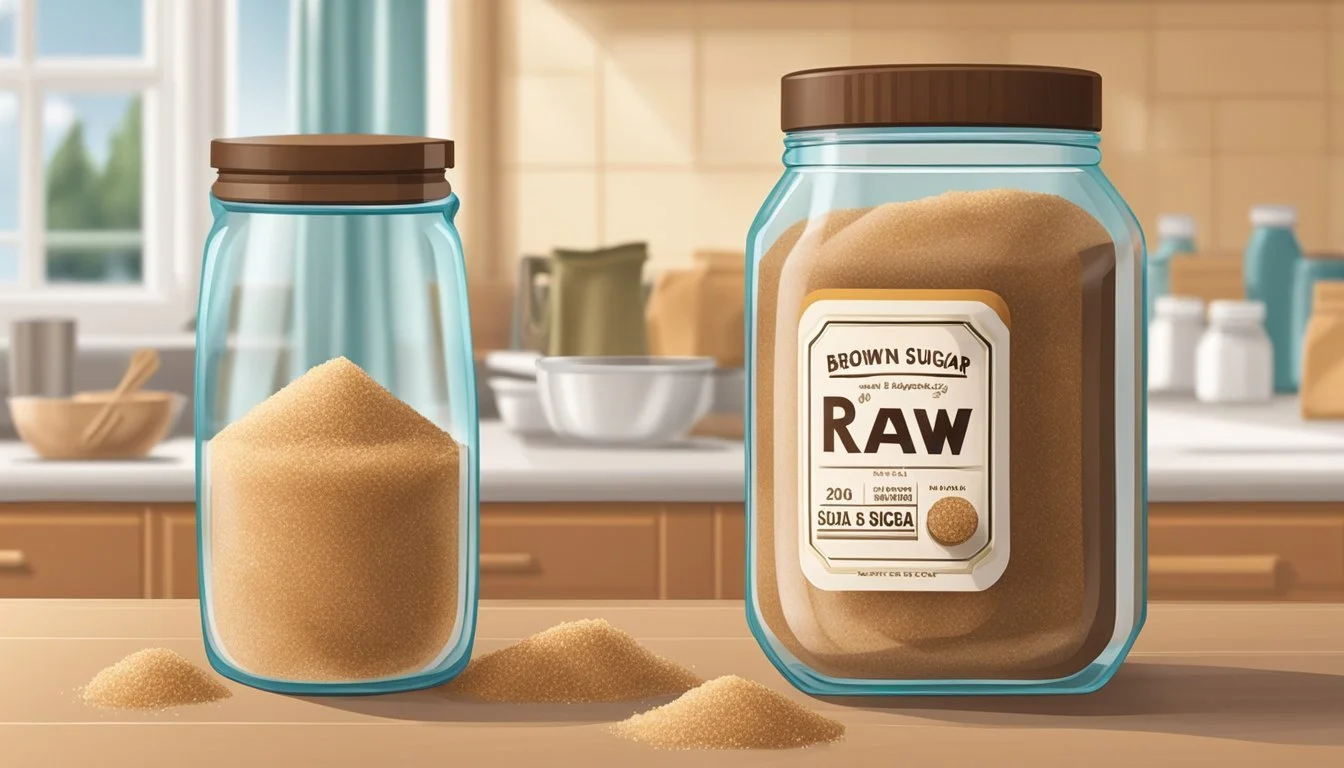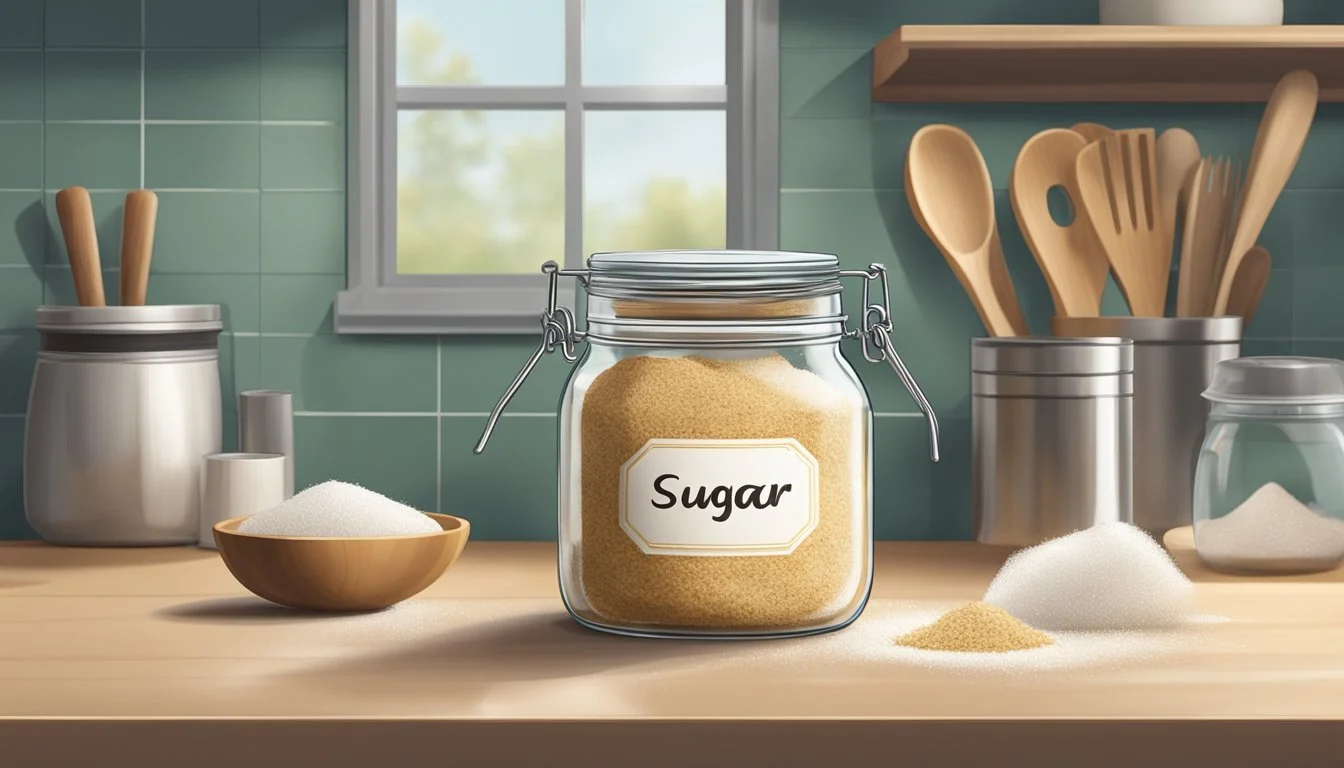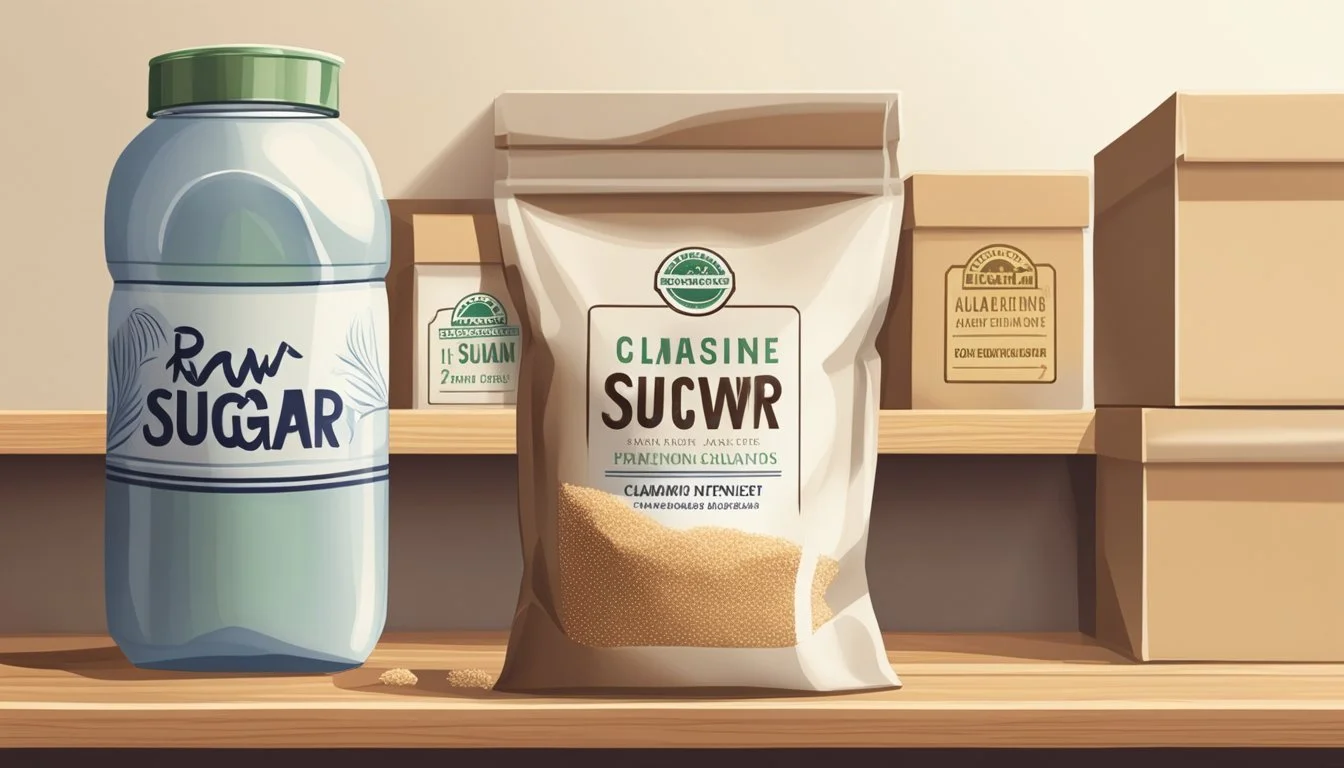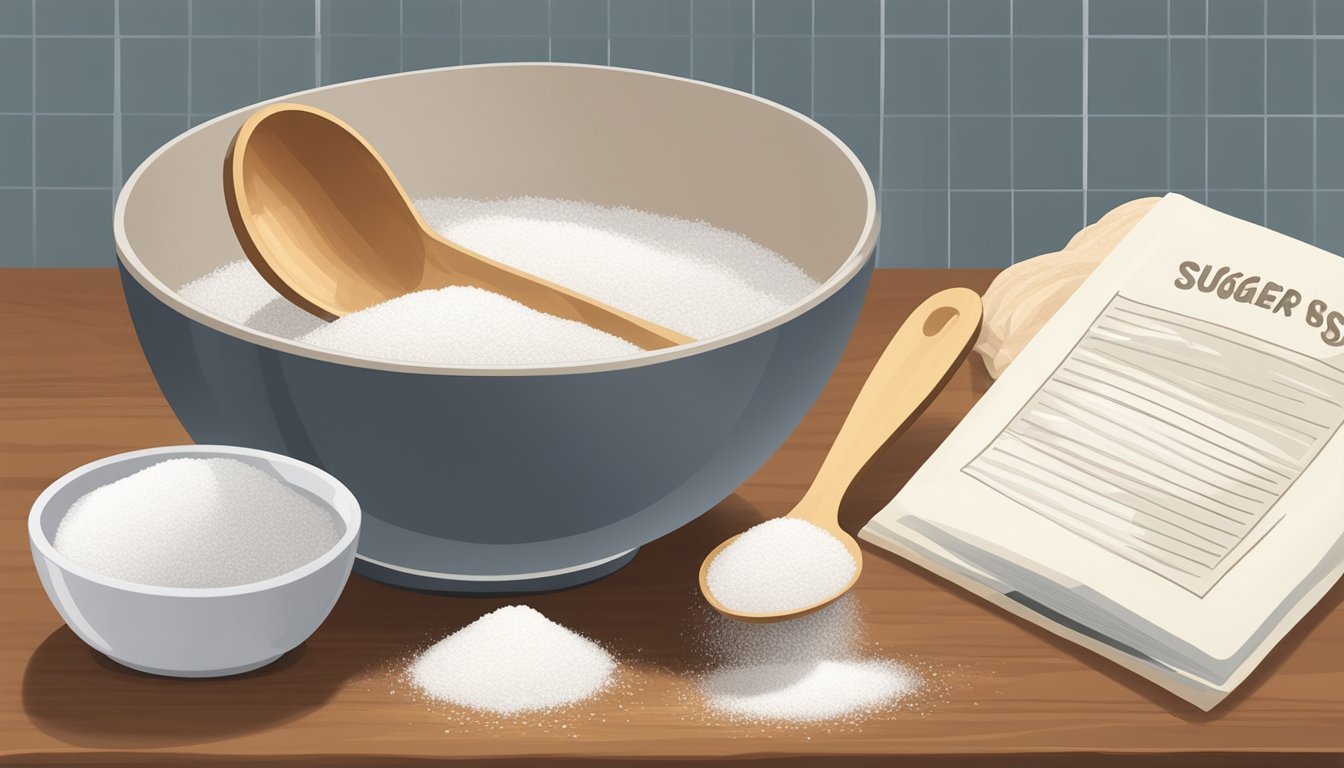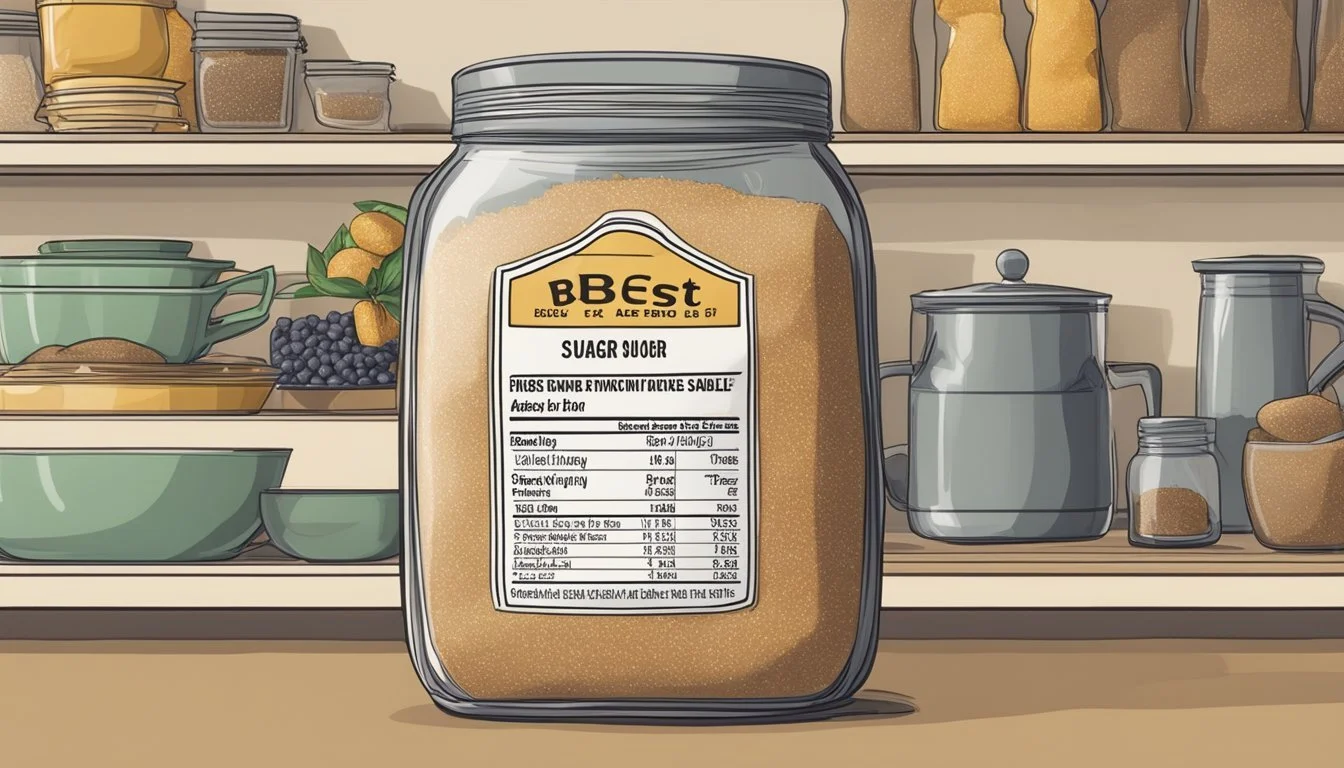How Long Does Raw Sugar Last?
Shelf Life and Storage Tips
Sugar, in its various forms, is a staple in kitchens worldwide, not only for its sweetening properties but also for its role in food preservation. Despite its long shelf life, consumers often question how long raw sugar, a less refined sugar variety, can last before it degrades in quality. Raw sugar, characterized by its light brown color and larger crystals, retains some of the natural molasses from the sugar cane juice, giving it a distinct flavor and moisture content compared to its fully refined white counterpart.
The longevity of raw sugar is influenced by proper storage conditions. To maintain its quality over time, it should be kept in a cool, dry place, shielded from moisture and heat sources. When stored in an airtight container that prevents the entry of air and pests, raw sugar's shelf life can be significantly extended, reducing the risk of clumping, flavor loss, or contamination.
Manufacturers typically recommend using raw sugar within a certain timeframe for optimal taste, which is often within two years of purchase. However, raw sugar does not spoil or mold in the same way perishable goods do, meaning its shelf life can well exceed the suggested period, provided it is stored under ideal conditions. The absence of spoilage does not imply that quality is maintained indefinitely, and so discerning consumers remain cognizant of changes in flavor and texture that indicate when the sugar may no longer be at its best.
Understanding Sugar and Its Varieties
Sugar, a sweet-tasting carbohydrate, comes in multiple forms catering to different culinary needs. From enhancing the flavor and texture of foods to acting as a preservative, sugars vary in crystal size, moisture content, and degree of refinement.
Types of Sugar
Granulated White Sugar: The most common type used in households and baking.
Raw Sugar: Larger crystals and a higher molasses content than granulated sugar.
Brown Sugar: Contains molasses, giving it its distinctive color and moisture.
Powdered Sugar: Granulated sugar that's been finely ground and mixed with a small amount of cornstarch to prevent caking.
Sugar Cubes: Small, compacted blocks of granulated sugar for convenient use.
Honey: A natural sweetener produced by bees, often used as a substitute for sugar.
Granulated White Sugar Characteristics
Granulated white sugar, refined from sugar cane or sugar beets, is characterized by its fine crystals and lack of impurities. This sugar dissolves easily and is versatile for use in beverages, baked goods, and general cooking.
Crystal Size: Fine, uniform
Color: White, due to the refining process
Shelf Life: Indefinite under proper storage conditions (cool, dry place)
Brown Sugar Properties
Brown sugar, either unrefined or partially refined, retains molasses from the sugar production process which imparts a distinct flavor and moistness. It is often used for its rich taste in baking and cooking.
Moisture Content: Higher due to molasses
Flavor Profile: Rich, with hints of caramel
Color: Light to dark brown
Varieties: Light brown sugar has less molasses compared to dark brown sugar
The Science of Sugar Storage
Proper storage is crucial for maintaining the quality of sugar. Factors such as moisture and the choice of packaging have significant impacts on preventing sugar from clumping or hardening over time.
Role of Moisture in Sugar Storage
Moisture is the primary adversary when storing sugar. It can lead to the sugar becoming lumpy and eventually harden, making it difficult to use. Storage solutions must therefore prioritize moisture control. A moisture-proof environment is optimal to store sugar, as it prevents water particles from interacting with the sugar crystals. This is why one commonly recommended method is keeping sugar in an airtight container. Such containers create a barrier against moisture, helping to maintain the sugar's granular texture.
Effects of Air and Packaging on Sugar
The packaging of sugar plays a crucial role in its longevity. Air exposure can contribute to the degradation of sugar over time through the process of oxidation which can affect its flavor. To prevent this, airtight packaging is imperative. Not only does it shield the sugar from moisture and prevent clumping, but it also minimizes air circulation, keeping the sugar in a more stable state. Airtight containers made of non-reactive materials, such as glass or metal with tight-sealing lids, are excellent for this purpose. Moreover, the use of moisture-proof packaging materials can further enhance storage quality by shielding the sugar from external humidity and other water sources that could induce hardening and clumps.
Shelf Life and Quality Control
When exploring the longevity of raw sugar, it’s crucial to distinguish between its virtually unlimited shelf life and the factors that influence its quality over time.
Indefinite Shelf Life versus Quality
Raw sugar is renowned for its indefinite shelf life, meaning that it does not spoil or support microbial growth due to its low moisture content. However, quality can deteriorate; over time, sugar may lose its optimal flavor or texture, although it remains safe to consume.
Factors Affecting Sugar Longevity
The longevity of raw sugar's quality depends on various factors:
Moisture: Any exposure to moisture can lead to clumping.
Temperature: High temperatures can cause melting or hardening.
Container: Improperly sealed containers can allow pests or bugs to contaminate the sugar.
Environment: Storing sugar near strong odors can lead to unwanted absorption.
How to Tell If Sugar Is Bad
Although raw sugar does not expire in the traditional sense, usability may be affected. Conditions to check include:
Odor: An off-smell indicates contamination.
Texture: Clumping or hardening can suggest moisture exposure.
Pests: The presence of bugs or larvae means the sugar should be discarded.
Despite no expiration date, signs of spoilage like mold or organic growth would signal it's gone bad, which is rare with proper storage. As long as these issues are absent, sugar is generally considered safe and usable, albeit not at its best quality.
Best Practices for Storing Sugar
To maintain the quality and extend the longevity of raw sugar, certain storage methods are recommended. Adhering to these can greatly affect how long raw sugar retains its desirable properties.
Ideal Storage Conditions
When storing sugar, one should aim to maintain a cool, dry area. Extreme temperature fluctuations and moisture are detrimental to sugar's quality. It is advisable to keep sugar at a consistent room temperature to prevent hardening or clumping, conditions that commonly affect sugar over time.
Temperature: Ideally, store sugar at consistent room temperatures, typically between 50-70°F (10-21°C).
Humidity: Keep sugar in a place with low humidity to avoid clumping.
Container and Location Recommendations
A correct container and proper placement are crucial for storing sugar effectively. Sugar should be stored in an airtight container to prevent contamination and to maintain its granular texture. The original packaging can suffice if it is sealed well; however, transferring the sugar to a container with a tight-fitting lid is often more reliable.
Container Type: Use airtight containers, such as:
Food-grade plastic containers
Glass jars with rubber gaskets
Metal canisters with tight lids
Location: Choose an appropriate location in the pantry or kitchen cabinets where sugar is protected from direct sunlight and is not near any heat sources.
By following these storage practices, raw sugar can be kept in the best condition for later use.
Preventing and Solving Common Sugar Problems
In dealing with raw sugar, it is important to address the issues of lumpiness, protection from pests and odors, and revitalizing sugar that's lost its prime quality.
Dealing with Lumpy or Hardened Sugar
Raw sugar, such as the granulated kind, has a tendency to harden or become lumpy over time due to moisture exposure. To prevent this, ensure sugar is stored in an airtight container to keep out moisture. If lumpiness occurs, placing a slice of apple or bread temporarily in the container can help soften the sugar. For hard brown sugar, using a microwave-safe container with a wet paper towel on top for a short burst in the microwave can revive its texture.
Protection from Pests and Odors
Sugar is prone to attracting pantry pests such as ants and other insects. To safeguard against this, store sugar in a secure, sealed container away from possible entry points for bugs. Ensure your pantry is regularly cleaned to prevent pests. As sugar can absorb odors, keeping it away from strong-smelling foods and ensuring a clean storage environment are important to maintain its pure taste.
Reviving Old Sugar
Granulated sugar does not spoil but can lose its desirable qualities. For sugar that has become stiff over time, creating a simple syrup by dissolving it in water over heat is a way to utilize such sugar. To soften brown sugar, you can insert a commercial brown sugar softener or a piece of terracotta that has been soaked in water into the sugar container, which can help restore moisture and softness.
Incorporating Sugar in Cooking and Baking
Sugar is a versatile ingredient that plays a crucial role not only in flavoring but also in the structure and texture of many dishes, especially baked goods. Its presence extends shelf life, helps preserve fruits, and creates desired consistencies in jams and jellies.
Sugar's Role in Recipes
Sugar serves multiple functions in cooking and baking beyond simply sweetening. It contributes to the physical properties of various dishes:
Flavor: Sugar adds sweetness and enhances the taste of other ingredients.
Texture: In cookies and cakes, sugar gives a tender crumb and can create varying degrees of chewiness or crispiness.
Preservative: Sugar acts as a preservative in jams and jellies by inhibiting bacterial growth.
Color: During baking, sugar leads to browning and a pleasing color via the Maillard reaction.
Consistency: It stabilizes mixtures like meringues and contributes to the syrupy texture in preserves.
Substitutes and Alternatives
Finding suitable substitutes for sugar balances maintaining flavor and texture with altering nutritional content. Common substitutes include:
Honey or Maple Syrup: Ideal in moist baking recipes or as a drizzle on fruits but may alter the flavor profile.
Artificial Sweeteners: Used for reducing caloric intake, these can bake similarly to sugar but often lack the same browning and textural properties.
Sugar, in its many forms, plays an essential role in baking and cooking. Choosing the right type and understanding its functions can ensure successful culinary outcomes.
Additional Information and Resources
In the realm of raw sugar storage, misconceptions are numerous. Here, frequently asked questions are addressed and common myths are dispelled, providing clarity and factual information based on industry expertise.
FAQs and Sugar Myths
Q: Can raw sugar become unusable over time? A: Raw sugar has an excellent shelf life due to its inability to support microbial growth, meaning it does not spoil easily.
Q: Does storing sugar in the refrigerator prolong its shelf life? A: Refrigeration is unnecessary for raw sugar as it is best kept in a cool, dry place, and refrigeration may introduce unwanted moisture.
Sugar Storage Myths Debunked
Myth: Sugar must be stored in the refrigerator to keep it fresh. Fact: Sugar is best stored at room temperature in an airtight container to prevent moisture absorption.
Myth: Sugar has a strict expiration date and is not safe to consume past this date. Fact: Sugar, when stored properly, does not have a true expiration date and can last indefinitely, though a "best if used by" date may indicate a peak in quality.
Conclusion
Raw sugar, when stored properly, exhibits remarkable longevity. Storage conditions are paramount for maintaining its quality. It must be kept in a cool, dry place, away from moisture and heat. An airtight container is ideal to prevent contamination and to preserve the sugar's texture and flavor.
Though raw sugar does not spoil in a traditional sense, over time, it may experience changes. It can harden or clump due to moisture exposure, but these physical changes do not indicate spoilage. The flavor and color may also change slightly, but this does not affect its safety for consumption.
Individuals concerned with quality should note that while raw sugar can last indefinitely, its peak quality might diminish after a substantial period of time. Utilizing sugar within a reasonable timeframe ensures that the user enjoys its best qualities.
In summary:
Ensure raw sugar is stored in a cool, dry environment.
Use an airtight container to protect against moisture and contaminants.
Although it doesn't spoil, quality is best when used within an optimal timeframe.
Consumers can confidently incorporate raw sugar into their pantry staples, knowing its durability and reliability for various culinary applications.


